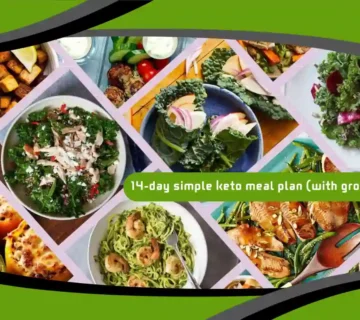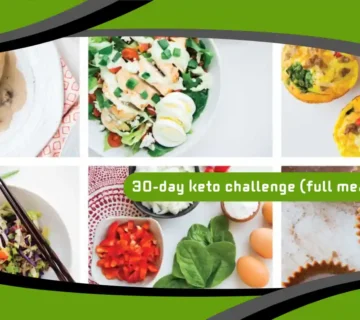Creating your own keto meal plan is a powerful step toward taking control of your nutrition and aligning your eating habits with your wellness goals. The ketogenic diet is a high-fat, moderate-protein, and low-carbohydrate lifestyle designed to shift the body’s metabolism into a fat-burning state known as ketosis. By customizing your meal plan, you can ensure nutritional balance, food variety, and sustainability in the long term. In this guide, we’ll walk through all the essentials for crafting a strategic and nourishing keto meal plan tailored to your personal preferences and health goals.

Understanding the Basics of the Ketogenic Diet
Before you begin building a meal plan, it’s essential to understand the foundation of the ketogenic diet. Keto relies on drastically reducing carbohydrate intake to around 5–10% of your daily calories, increasing fats to about 70–75%, and setting protein at 15–20%. This macronutrient distribution promotes the production of ketones—molecules used by the body for energy instead of glucose. By understanding this basic framework, you’ll be better equipped to structure meals that support ketosis effectively.
Determining Your Daily Caloric Needs
Your keto meal plan must be based on your individual caloric requirements, which are influenced by your age, sex, activity level, and health goals. Whether you’re aiming to lose fat, maintain weight, or gain muscle, calculating your daily calorie target is a key first step. Use a calorie calculator to find your maintenance level and adjust it accordingly. This will help guide your portion sizes and overall food choices while staying within the bounds of ketogenic macronutrients.
Setting the Right Macronutrient Ratios
After determining your daily calorie target, you need to break those calories down into specific macronutrients. A typical keto macro ratio includes about 70–75% fat, 20–25% protein, and 5–10% carbohydrates. You can use macro calculators to translate these percentages into grams. For example, on a 2,000-calorie plan, this equates to approximately 155g fat, 100g protein, and 25g net carbs. Hitting these ratios consistently will support optimal ketosis.
Watch also: Keto for Women: A Complete Meal Plan for Weight Loss, Energy, and Hormonal Balance
Choosing High-Quality Fats
Fat is the cornerstone of keto, so choosing healthy fats is critical. Focus on whole food sources like avocados, olive oil, nuts, seeds, coconut oil, ghee, and fatty fish. These fats provide not only energy but also essential fatty acids and fat-soluble vitamins. Avoid trans fats and highly processed vegetable oils, which may increase inflammation. Diversifying your fat sources will also keep your meals interesting and nutritionally balanced.
Prioritizing Moderate Protein Intake
Protein intake on keto should be moderate—not too high and not too low. Aim for high-quality, nutrient-dense protein sources such as eggs, poultry, beef, lamb, fish, and full-fat dairy. Protein supports muscle maintenance, satiety, and metabolic function. Excess protein can be converted into glucose through gluconeogenesis, which may hinder ketosis. Finding your sweet spot with protein will help preserve muscle while keeping you in a fat-burning state.
Selecting Low-Carb Vegetables
Low-carb vegetables are a vital part of any keto plan, providing fiber, vitamins, and antioxidants. Focus on leafy greens, cruciferous vegetables (like broccoli and cauliflower), zucchini, mushrooms, and asparagus. These foods are low in net carbs and high in volume, helping you stay full while adding color and texture to your meals. Make vegetables the foundation of your plates alongside proteins and fats to achieve nutritional synergy.
Understanding Net Carbs
To maintain ketosis, you need to monitor your net carbohydrate intake. Net carbs are calculated by subtracting fiber and certain sugar alcohols (like erythritol) from total carbohydrates. This distinction is crucial because fiber doesn’t impact blood sugar levels or ketosis. Keeping net carbs under 25–30 grams per day is a general guideline for most individuals to stay in ketosis.
Planning Balanced Keto Meals
Each meal should ideally contain a balance of fats, proteins, and low-carb vegetables. A good template is a protein base (like grilled salmon), a healthy fat (like olive oil dressing), and a low-carb vegetable (like sautéed spinach). Meal prepping a few combinations in advance will help ensure consistent macro tracking and reduce decision fatigue. Aim for variety throughout the week to cover your micronutrient needs and prevent boredom.
Meal Timing and Frequency
On keto, meal frequency can be flexible depending on your lifestyle. Some people prefer three main meals, while others thrive on two larger meals or even incorporate intermittent fasting. What matters most is consistency and hitting your daily macro goals. Ensure that meals are spaced in a way that supports your energy levels and aligns with your natural hunger signals.
Incorporating Snacks Strategically
While keto minimizes hunger naturally, well-planned snacks can help bridge gaps between meals. Ideal keto snacks include hard-boiled eggs, cheese cubes, avocado slices, or nuts. Choose snacks that are low in carbs and high in fat to maintain your metabolic state. Avoid keto-labeled processed snacks with hidden sugars or starches, and use snacks as a tool—not a habit.
Hydration and Electrolyte Balance
Keto has a natural diuretic effect, so staying hydrated is essential. Water, herbal teas, and broth are excellent choices. Electrolytes like sodium, potassium, and magnesium must also be replenished to prevent symptoms of the “keto flu.” Include mineral-rich foods like leafy greens, avocados, and bone broth. You may also consider electrolyte supplements if you’re highly active or sweating frequently.
Smart Grocery Shopping for Keto
Building a smart shopping list is the foundation of a successful meal plan. Focus on whole, unprocessed keto staples: meats, eggs, full-fat dairy, leafy greens, nuts, oils, and herbs. Avoid hidden sugars, starches, and refined products. Shopping the perimeter of the grocery store and reading labels closely will help you stay on track and make informed purchases.
Watch also: Keto Diet Meal Plan for Busy People: Simple Low-Carb Meals for a Hectic Schedule
Meal Prep and Batch Cooking
Batch cooking is a time-saving strategy that enhances consistency and reduces mealtime stress. Prepare large portions of keto-friendly dishes like stews, casseroles, grilled meats, and roasted veggies to store for the week. Use meal prep containers to portion meals and track macros more easily. Planning ahead increases your chances of success and removes barriers during busy days.
Avoiding Common Keto Pitfalls
Many beginners fall into traps like consuming too much protein, not eating enough fat, or relying on processed “keto” products. These mistakes can stall progress or create nutrient imbalances. Focus on whole foods, mindful eating, and consistent tracking to avoid these pitfalls. Education and preparation are your best allies for success on keto.
Customizing for Food Preferences and Allergies
Your keto meal plan should reflect your personal tastes and dietary restrictions. If you’re dairy-free, opt for coconut products and avocado. If vegetarian, use eggs, nuts, seeds, and plant-based oils. Flexibility and personalization make keto more sustainable, enjoyable, and tailored to your long-term goals.
Tracking Progress and Adjusting
Monitoring your progress allows you to fine-tune your approach. Use a food tracker to log your meals and monitor your macros. Keep an eye on energy levels, body composition, and digestion. If weight loss stalls or you feel fatigued, reassess your macros or meal frequency. Keto is not static—adjustments are part of the journey.
Supplementing Wisely on Keto
While food should come first, some supplements may support your keto experience. Consider magnesium for muscle cramps, omega-3s for inflammation, and MCT oil for quick energy. Avoid unnecessary supplements and focus on gaps your diet may not fill. Always consult with a healthcare provider before starting any new supplement regimen.
Staying Motivated and Consistent
Consistency is more important than perfection. Develop a routine, celebrate small wins, and stay focused on your goals. Keto is a long-term lifestyle, not a quick fix. Support groups, meal planning apps, or working with a nutritionist can help you stay on track. Build habits that align with your wellness vision.
Evolving Your Keto Plan Over Time
As your body and goals evolve, so should your keto plan. Some people shift to targeted or cyclical keto after building a strong foundation. Others may reintroduce certain foods or modify macronutrient targets based on progress. Continue learning, listening to your body, and refining your approach for long-term sustainability and success.
Watch also: Keto and Intermittent Fasting Combined: The Ultimate Fat-Burning Plan Backed by Science



No comment